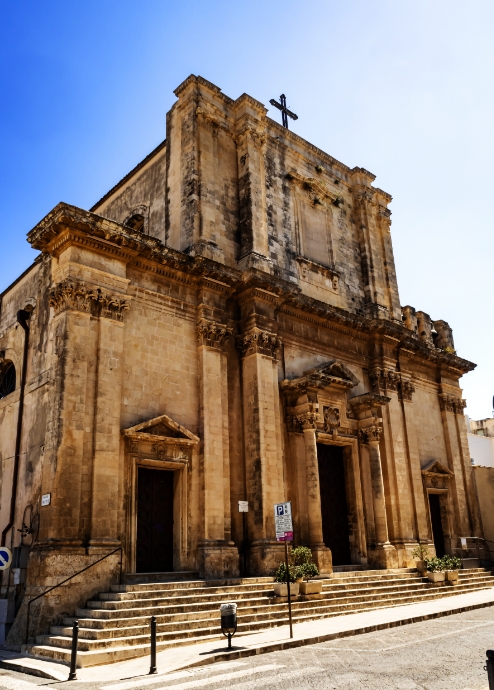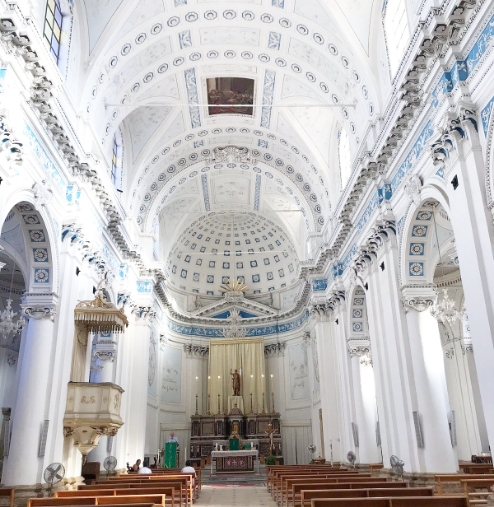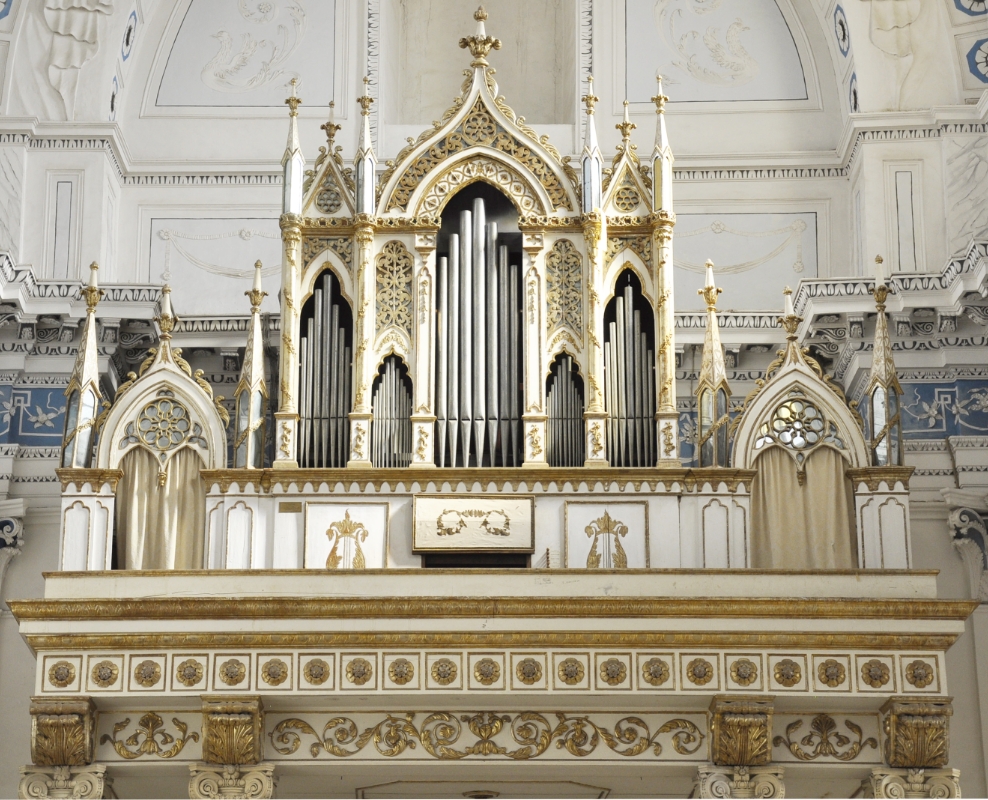Church of Saint John the Baptist
Begun in 1701; redesigned and defined 1772-1852
Open everyday: 8-12 / 17.30-20
Tel: 0931821041
The Church of Saint John the Baptist is recorded as having existed since 1498 in the Troncello district of the old city of Avola. In 1602 the chapel of the blessed hermit Corrado Confalonieri (St. Conrad of Piacenza) was built inside it, and it housed his reliquary from 1621.

The church was destroyed by the earthquake of 1693. In the new city, designed on a hexagonal plan, it was rebuilt on a side of the former Piazza di S. Giovanni Battista (Piazza Trieste), near the Porta Siracusa at the start of the former Strada Corso (now Corso Vittorio Emanuele).
The church gave its name to one of the fours districts into which the new city was divided. Work began in 1701 under the magister Michelangelo Alessi of Syracuse, but was left unfinished due to financial difficulties. The partly built church was sold to the Jesuit Friars in 1723, who used it as a grammar school until 1729. In 1744 it was reconverted and was able to house the precious 17th-century reliquary containing the bone from the nape of the neck of the holy hermit Conrad and the statues of the hermit and of St. John the Baptist that had survived the earthquake intact.
Due to static problems the building was demolished in 1772, rebuilt from the foundations upwards and extended. The design of the new church was the work of Giovanni Battista Santoro (Avola 1754-1832), Master Builder of the Workshops in the city. The sporadic flow of funds meant that only the first level and the central part of the second level of the façade were built to excellent standards and the interior of the church was completed in 1852.

The wide naves are decorated with neo-classical style stucco work. The main altar is in the same style, decorated with polychrome marble and a large 18th-century painting of the Baptism of Jesus in the Jordan. The paintings on the vault over the nave are of episodes in the life of the saint and are the work of Gregorio Scalia (San Gregorio di Catania 1844-Avola 1822) in tempera on “dry” plaster. Scalia was also responsible for the paintings in the altars in the side-aisles of Saint Alphonsus Maria dei Liguori (1869), The Holy Family (1870), the Martyrdom of Saint Lucia (1872) and Saint Gaetano da Thiene (1874) and a copy of The Delivery of the Keys by Giuseppe Patania.

As in old Abola, a chapel was built in the church dedicated to the blessed Conrad, protector of the city together with Saint Venera. Located to the right of the presbytery, it was built in 1850 by Dorotea Sirugo Interlandi, Princess of Bellaprima, in accordance with the will of her father Corrado Sirugo, Baron of Meti and Santa Domenica.
The five paintings on canvas depicting the Stories of Saint Conrad date back to the early decades of the second half of the seventeenth century. The interesting cycle of paintings are entitled Conrad Exculpates the Innocent, The Farewell of his Wife Euphrosine, The Temptation of Satan, The Miracle of the Warm Bread Offered to the Bishop of Syracuse and The Miracle of the Meat Transformed into Fish. The original wooden statue of Saint Conrad of 1602 has been removed, and the current one was made in 1874 by the sculptor Raffaele Abbate from Naples. There is a particularly fine neo-gothic organ on the inside of the facade wall over the chancel that was built in 1866 by Sebastiano Calcerano Platania from Acireale.
Explore the historic center of Avola!
Welcome to Avola, the hexagonal city! Explore the historic center.
Explore the historic center of Avola!
Welcome to Avola, the hexagonal city! Explore the historic center.
